5 Best Grass Types for Dallas, TX
BY KIMBERLY MAGERL | MARCH 5TH, 2019 | DALLAS, LAWN CARE, TEXASWith an average temperature of 79 degrees Fahrenheit in October, it is easy to see why backyard barbecues and frozen margaritas are so popular in Dallas, Texas, and it would be a shame not to show off your lush, green yard. The best grass types for Dallas need little water to thrive in the city’s hot summers. If you’re installing a new lawn or ready to take your existing yard from drab to fab, consider one of these options for results that will survive the Texas heat.
- 5 Warm-Season Grasses for Dallas
- FAQ About Dallas Grass Types
- Choosing Plant and Grass Varieties for Your Dallas Landscape
5 Warm-Season Grasses for Dallas
The city’s hot summers, cold winters, and low precipitation levels are best suited to warm-season grass varieties. Warm-season grasses soak up the sun and actively grow during late spring and go dormant around mid-fall. These varieties grow best in the southern United States, preferring growing temperatures between 80 to 95 degrees Fahrenheit.
1. Bermudagrass
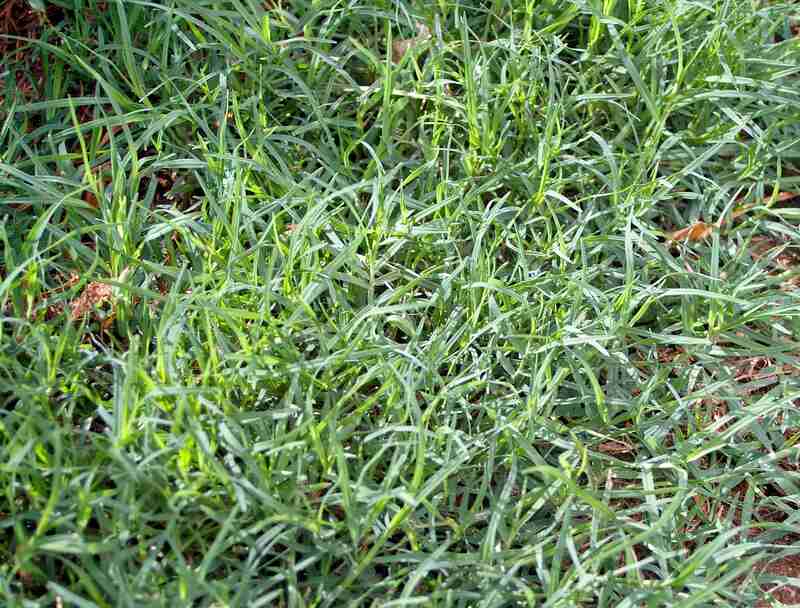
Photo Credit: Bidgee / Wikimedia Commons / CC BY-SA 3.0
Bermudagrass is the most popular Texas grass variety. The hardy, fine-textured turfgrass withstands drought and heavy traffic, making it a durable and versatile option for athletic fields, home lawns, golf courses, and more. It is an aggressive grass that recovers quickly from damage, leading some to consider it an aggressive species.
Dallas is home to many types of sun-loving bermudagrass. Common bermudagrass has a light green color and coarse texture, while hybrid cultivars have a finer texture and dark green appearance. Common bermudagrass requires less maintenance than hybrid varieties but is less dense with a more sparse appearance.
Classification: Warm-season grass
Spreads by: Stolons and rhizomes
Shade tolerance: Poor — needs full sun
Drought resistance: High
Foot traffic tolerance: High
Maintenance needs: Needs frequent mowing due to fast growth rate; develops thatch easily; needs regular fertilization
Mowing height: 1-2 inches
Potential for disease: Good resistance to disease, although diseases are common; low resistance to insects
Soil pH: 6-6.5
Soil type: Tolerates most soil types
Other notes: Bermuda spreads aggressively via its stolons (above-ground stems) and rhizomes (below-ground stems) and can out-compete many weeds. The downside is that it also can be a nuisance and is sometimes considered invasive. You’ll often find it has tunneled underground into flower beds and spread into neighboring lawns.
2. St. Augustinegrass
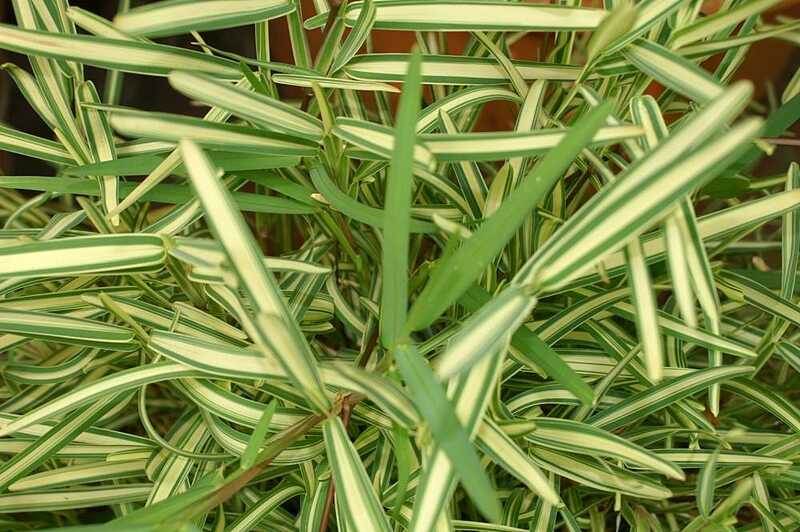
Photo Credit: David J. Stang / Wikimedia Commons / CC BY-SA 4.0
Deep roots are one thing Texans and St. Augustinegrass have in common. This warm-season grass is a popular choice for urban Dallas thanks to its shade tolerance. While the quick-growing grass is easy to establish, it does not stand up well to heavy traffic and might struggle during unusually cold Texas winters.
St. Augustinegrass is dark-emerald to blue-green and coarse-textured. It is not as hardy as other warm-season grass types and is susceptible to disease and pests like chinch bugs.
Classification: Warm-season grass
Spreads by: Stolons
Shade tolerance: Moderate shade tolerance, among the highest of any warm-season grass; some cultivars are more shade tolerant than others
Drought resistance: Moderate
Foot traffic tolerance: Moderate
Maintenance needs: Moderate to high mowing frequency
Mowing height: 2.5-4 inches (mow dwarf varieties from 2.5-3 inches; standard cultivars from 3-4 inches; mow tall in shade)
Potential for disease: Moderate to high
Soil pH: 6-7.5
Soil type: Tolerates many soil types; prefers moderately fertile and moist (not waterlogged) soils; not a highly drought-tolerant grass; doesn’t tolerate soil compaction
Other notes: Native to coastal areas across the world and prefers moist soils and mild winters; will thrive in more inland areas provided growing conditions are met; good salt tolerance; will go dormant during winter in all but the southernmost regions
3. Zoysiagrass
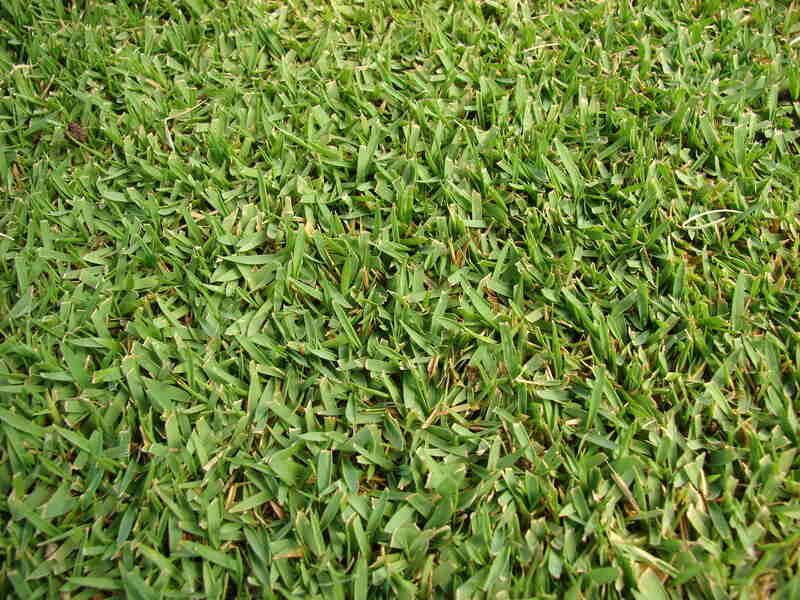
Photo Credit: Forest & Kim Starr / Wikimedia Commons / CC BY-SA 3.0
There are around eleven cultivars of Zoysiagrass available in Texas. These grasses tolerate low mow heights, drought, cold, shade, and heavy traffic, and have low fertilization requirements. Cultivars of Zoysiagrass grow densely, blocking out weed growth thanks to thick stiff leaf blades.
Zoysiagrass is recognizable for its dense appearance and dark green color. Cultivars are not prone to disease or insect infestation but grow slowly.
Classification: Warm-season grass
Spreads by: Stolons and rhizomes
Shade tolerance: Tolerates light to moderate shade
Drought resistance: High
Foot traffic tolerance: High
Maintenance needs: Low to moderate nitrogen requirement; moderate mowing frequency
Mowing height: 1-2.5 inches
Potential for disease: Not prone to disease and insects; good disease tolerance overall
Soil pH: 6-6.5
Soil type: Well-draining, some cultivars more tolerant of a wide range of soils than others
Other notes: Moderately salt tolerant; cut with sharp mower blade; mow taller if grass is in partial shade
4. Buffalograss
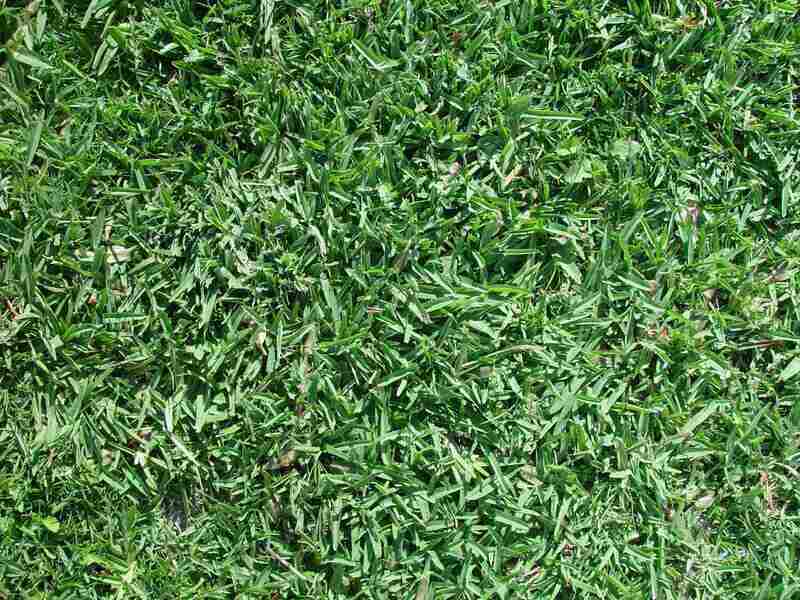
Photo Credit: Pixnio
Texas native Buffalograss loves to be undisturbed to soak in the Dallas sun. The warm-season grass is drought and cold-tolerant. It requires little fertilization and less mowing than most varieties. Unfortunately, the low-fuss cultivar does not stand up to heavy traffic, shade, or weeds.
Buffalograss loves hot summers and its gray-green blades are pest and disease resistant.
Classification: Warm-season grass
Spreads by: Stolons
Shade tolerance: Very low — best suited for full sun
Drought resistance High
Foot traffic tolerance: Very low, but light use or rare heavy use is OK
Maintenance needs: Low mowing frequency — once per week or less
Mowing height: 2-4 inches or leave unmowed
Potential for disease: Good tolerance against diseases and insects
Soil pH: 6.5-7.5
Soil type: Native soils, not sandy soils
5. Centipedegrass
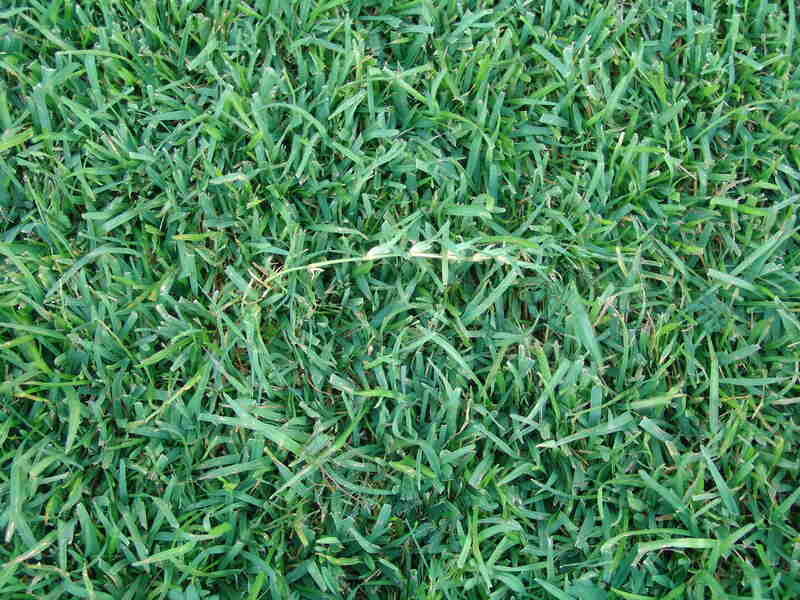
Photo Credit: James Becwar / Wikimedia Commons / CC BY-SA 3.0
Centipedegrass is a low-maintenance cultivar, requiring little mowing, fertilization, or water to remain lush and green. The smooth, flat-bladed grass does not handle heavy traffic, shade, cold, or herbicides well.
Centipedegrass has a pronounced light green color and medium texture. The slow-growing grass is prone to pests and disease when improperly maintained or over watered.
Classification: Warm-season grass
Spreads by: Stolons
Shade tolerance: Moderate — at least six hours of full sun per day
Drought resistance: Low to moderate
Foot traffic tolerance: Low
Maintenance needs: Low mowing frequency
Mowing height: 1.5-2 inches
Potential for disease: Good resistance to diseases and insects
Soil pH: 5-6
Soil type: Acidic, infertile, at least moderately good drainage (very dense, clay soils produce poor results)
Other notes: Low maintenance once established; greenish-yellow color (like a green apple) during the growing season; low fertilizer and mowing requirements; not a salt-tolerant grass
FAQ About Dallas Grass Types
When does grass grow in Dallas?
Warm-season grasses grow when the Texas temperatures hit 65 degrees Fahrenheit, usually toward the end of February or the beginning of March. The growing season typically ends with your grass going dormant when temperatures drop below 45 degrees Fahrenheit around mid-November.
When should I plant grass seed?
You should plant your grass seed in March or April. This gives the seed plenty of time to germinate before the hot Texas summer.
What is the best grass type for a shady lawn?
St. Augustinegrass is the most shade-friendly grass type for Dallas.
What is the best grass type for a pet-friendly lawn?
Dogs and cats love to soak up the summer sun as much as your Texas plants. If your furry friend spends a lot of time outdoors, bermudagrass is your best option. This variety grows densely, withstands heavy traffic, and recovers quickly when man’s best friend has the urge to dig.
Choosing Plant and Grass Varieties for Your Dallas Landscape
All Texas grass varieties thrive in warm weather, but different cultivars have different characteristics and needs. Choose a variety that works well for your space and lifestyle.
Your grass variety is just one component of your complete landscape. There are numerous low-maintenance landscaping options available for Dallas. Check out our list of the best native plants that will thrive in the dry summer heat.
A lush backyard oasis is within reach. Contact a Dallas lawn care pro today to keep your lawn and landscaping green and healthy.
Main Image Credit: Michael Barera / Wikimedia Commons / CC BY-SA 4.0